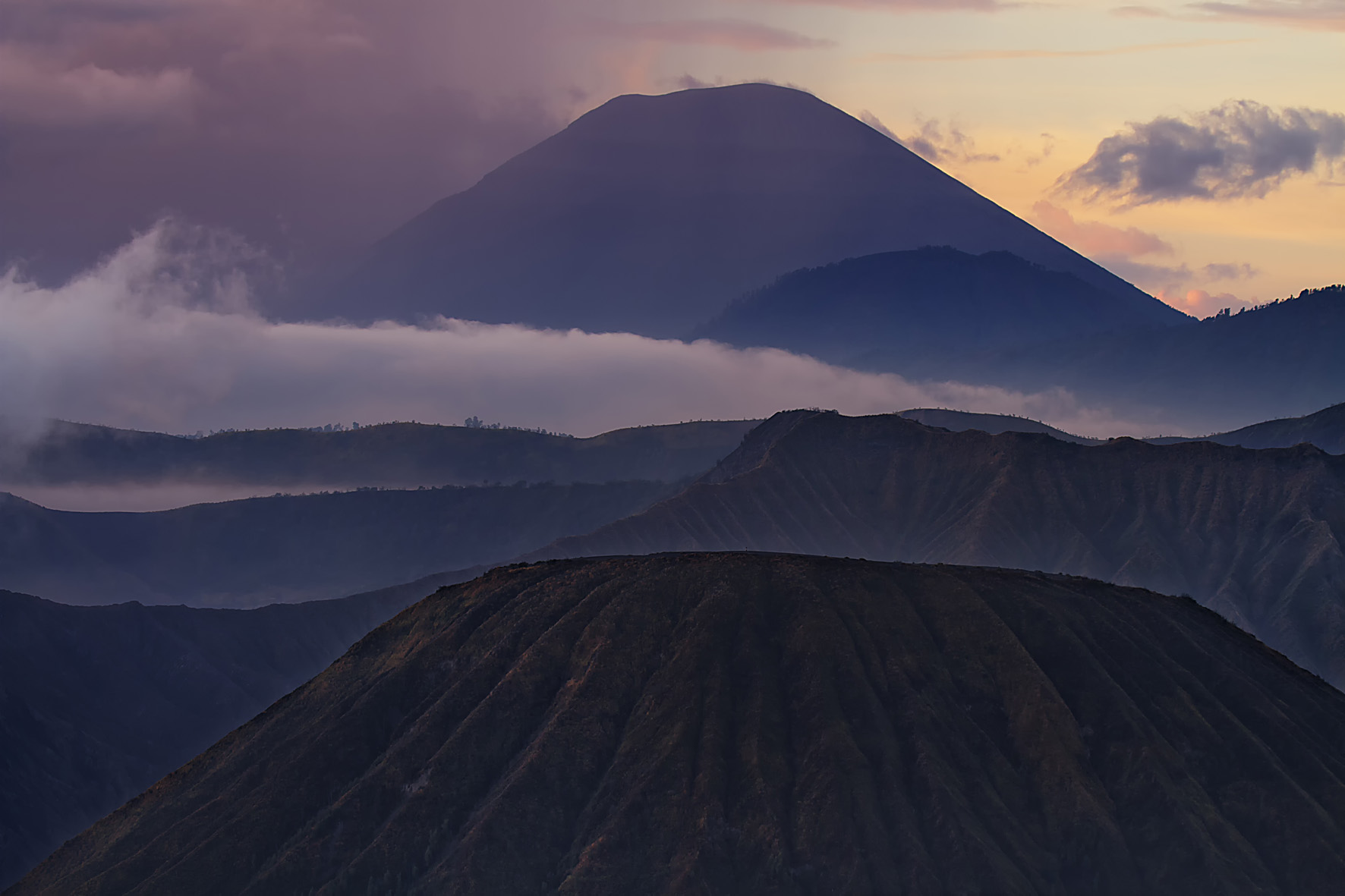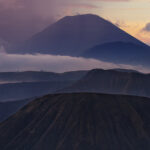
Over there…
On the other side…
Where the sun sets…
Or maybe… The moon…that rises…
Veils of twirling simmering smoke…
There are shades of You…
Even in your anger…one reaches out…
To feel you…where you reach out…
To heal them…seal them….
(poem by Atamjot Grewal)
Mount Meru and Sumeru find reference in the Hindu spiritual scriptures as mythological mountains where resides the creator in it’s trinity form as Brahma, Vishnu and Shiva, performing the functions of creating, sustaining and destroying. Scriptures do not define where reside Meru and Sumeru on the earth. It is however very interesting that the historical spread of Indian philosophical and spiritual traditions have had a strong footing in remote regions like Tibet and Indonesia and I have found in Tibet, the Mount Kailash, is referred as Meru, while in Indonesia reside the Tengger Hindu community in East Java that refer to two volcanic mountains as Meru and Sumeru.
Whatever be the intent of the Hindus mythological references, I as a practicing Sikh have studied the Sikh scripture (Guru Granth Sahib), which has only resonated one thing about Meru and Sumeru in it’s poetic references, that these are mountains lying at a spiritual plain. Human Consciousness, which is the reflection of God, resides in the human body, which is synonymous to a mountain and hence referred to as Meru and Sumeru. It is the attachment to the human body that creates an ego state and therefore a barrier to one’s spiritual progress. The body is therefore seen as a mountain, within which resides the Trinity form of God, as our self Consciousness, which is the source of energy that daily creates, sustains and destroys us as human individuals. It’s the dynamism of Trinity and the activity of creating, sustaining and destroying in our day to day struggles to live as a human and hence this reference.
I strongly believe the ancient Hindu texts also referred to these mountains in the same essence. However, humans are weak by nature. We tend to have a need to associate with the physical world as what can’t be seen at the level of consciousness, we loose faith in it’s existence. It’s primarily for this reason that the spiritually oriented historians in India have tried to search for existence of these mountains in the Himalayas and failed. On the other hand the presence of Hindu belief in remote areas of Tibet and Indonesia have resulted in the remotely existing communities to find solace in identifying mountains in their vicinity as Meru and Sumeru.
My belief is that the ancestors in Tibet found Mount Kailash to be associated with Meru as it is a mountain from where emerge four major rivers of the Asian Plateau – Sutlej, Brahmaputra, Indus and Karnali (that feed into Ganges) and water is the source of creation, sustaining and destruction. So to them Kailash probably was a representation of God in it’s trinity form.
To the Hindu Tengger community of Indonesia, the volcanic mountains of Bromo (Meru) and Sumeru are associated with the belief of being connected to God because the volcanic activity, connects them to the core of the earth. Lava is a form of energy that destroys but in it’s destruction lies the hope of creation as the fertility of land through the volcanic eruption results in the land becoming more apt to generate new forms of life.
Whatever be the reality, here I was in Indonesia, standing at a distance on top of a mountain, looking at the layers of three mountains. At the background in this series is the Mount Sumeru. In the middle is the Mount Bromo (Meru) and in the foreground the Mount Batok. Both, Sumeru and Meru are volcanic. Click photo below to view the panorama in a larger pop up window.
As I have referred Mount Kailash in this post, if you are interested to see my photographs of this mountain in Tibet, then it can be accessed through link here. Mount Kailash Link.





Comment(1)
Atamjot says:
December 11, 2012 at 1:49 PMBeautiful beautiful pictures… Thank you…
I read a few lines that Bhai Nand Lal had written for Guru Gobind SinghJi saying…
O roaring winds!
Blow gently as ye pass, touching His temple door;
And lift not my dust away from His temple door…
even after my death,
lest my foes should say,
“Look! How he wanders from door to door!”
🙂